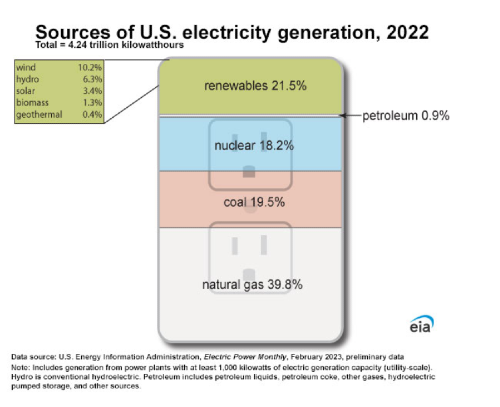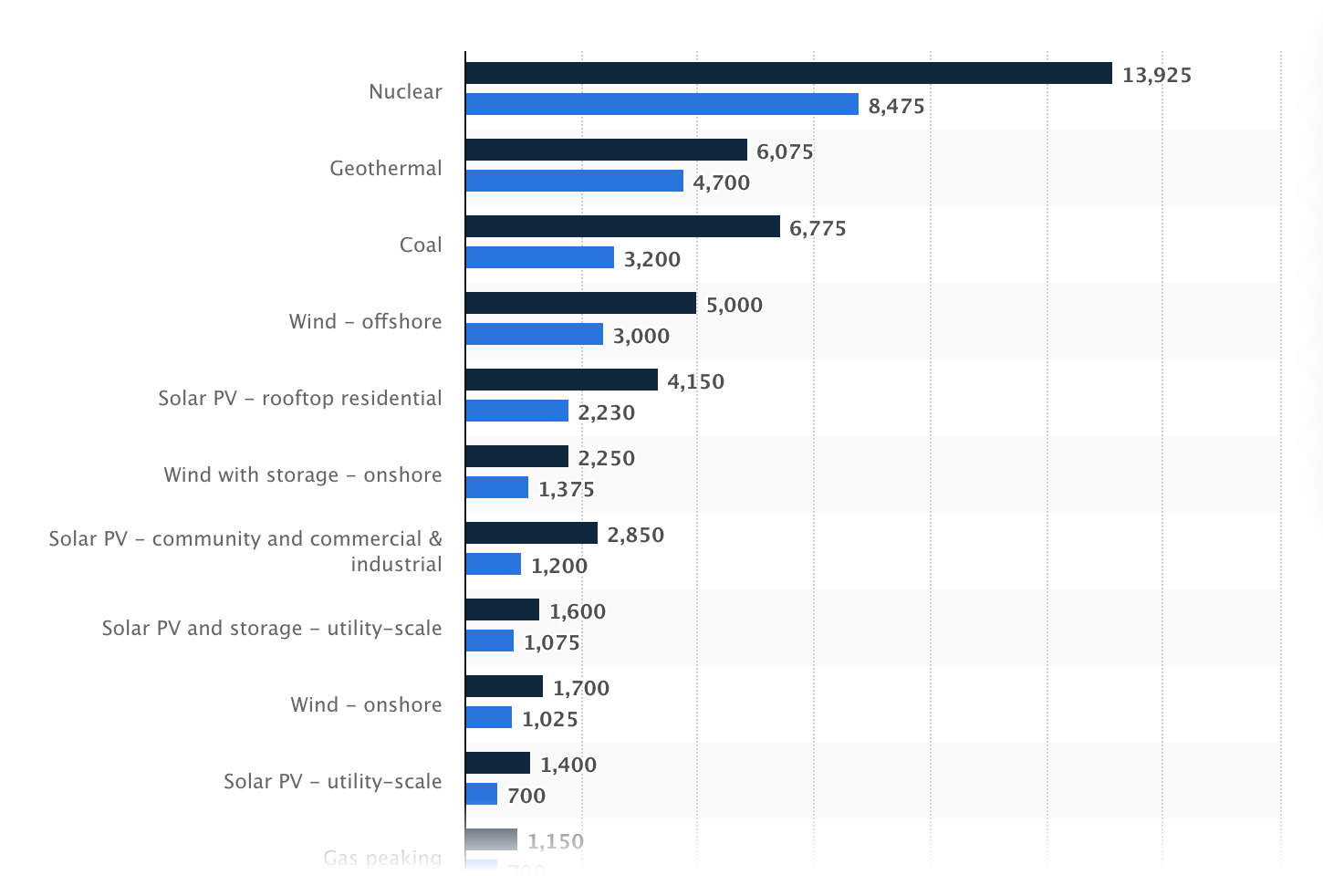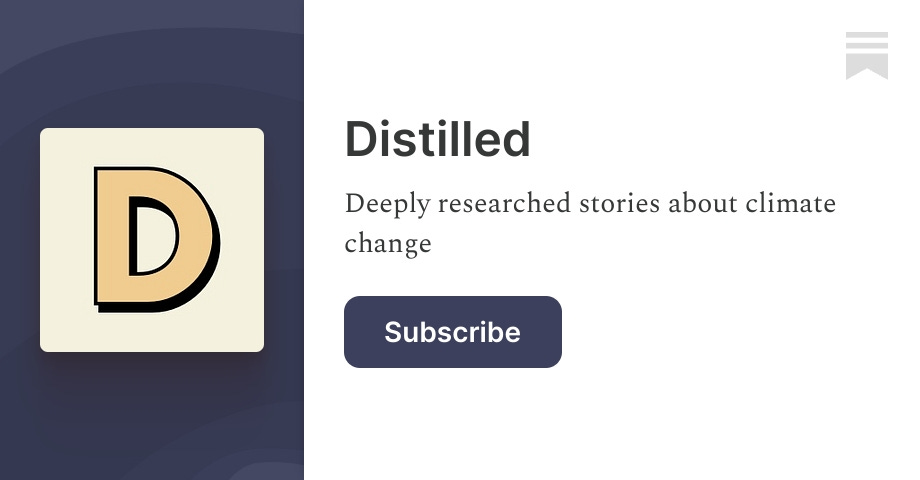Energy Sources
Mindset of Change
Power by Kanye West
Where does energy come from? When you turn on the lights or cook a meal, where does the power originate? In most cases, at least in most homes in the US, we're talking about electricity and natural gas.
In the US, energy comes primarily from steam turbines powered by one of three sources:
- Fossil fuels (~61%)
- Renewable energy (~21%)
- Nuclear energy (~18%)
Fossil Fuels
Fossil fuels are generally coal or natural gas, natural gas being used both for electricity and directly to power stoves and other appliances. Both are mined in the US, natural gas through the practice of fracking and coal through surface (often called strip mining) or underground mining. Though we import and export both (eia.gov) (eia.gov), the US is a net exporter of both natural gas and coal.

Apart from their role in producing greenhouse gases, fossil fuel extraction in the US is highly destructive. Fracking is the practice of shooting fluid deep into underground rock formations, causing them to break apart and release the gas trapped inside. However, fracking fluid is poisonous and can easily leak into ground water, and breaking apart deep rock formations can cause sinkholes. Not to mention, fracking fluid requires a large amount of water, which is then unrecoverable due to being highly toxic.
How does fracking work?
Coal mining is hardly better. Surface coal mining, or strip mining, completely destroys the surface of the land, stripping it of life and natural resources. Sometimes the land can be restored, but it typically requires human intervention (osmre.gov). Underground coal mining is dangerous and very bad for human health.

Renewables
Renewables are largely wind or water power, with solar power projected to increase in the near future (energy.gov). The availability of renewable energy depends mostly on your region. If you live in Arizona, solar and wind are probably the dominant sources. If you live in the northern Pacific, then water is probably a major source.
Although renewable energy sources are far preferable from a climate perspective, they have their own concerns. Electricity from water sources generally requires damming of rivers or lakes, which can be detrimental to local habitats and species.
"Dam Hetch Hetchy! As well dam for water-tanks the people's cathedrals and churches, for no holier temple has ever been consecrated by the heart of man . . ."
John Muir on the damming of Tuolomme River, flooding the Hetch Hetchy valley, (foundsf.org)

Wind turbines are famously dangerous to birds (even though fossil fuel plants are actually 35x as dangerous) (distilled.earth), and solar requires land to be covered in fields of panels (nature.com). Although biofuels have been a popular research topic, their viability as a long term renewable energy source is not generally well-understood (epa.gov). Other sources like tides are under rapid development, but will be primarily useful for coastal regions (pnnl.gov). Geothermal is another interesting new energy source, not yet cost effective (eia.gov).
It also has to be said that, although developing additional renewable energy capacity is critical to halt climate change, renewable energy solutions are time and location bound. For example, tidal energy must be produced at the coasts, and solar requires daylight. Batteries and additional grid capacity are the solution, but they have material costs as well (technologyrevew.com). In particular, battery technology is crucial to unlocking the full potential of renewable energy.
Certainly in the short term, renewable energy is the way to go. In order to support global energy needs long term, we need technology to catch up a little bit. Fortunately, it is well on its way (euronews.com).
Nuclear
Nuclear is perhaps the only single energy source capable of providing us with the level of energy usage we currently require. However, although it is considered clean energy in comparison to fossil fuels, it is not a perfect solution.
First, nuclear waste is not a trivial issue. Although the amount of nuclear waste produced per kilowatt hour of energy is significantly lower than the waste of fossil fuel plants, it is still radioactive waste that requires significant care in disposal (energy.gov). Second, the cost of nuclear power is significantly higher than other sources of energy, largely due to the high cost of building nuclear power plants (statista.com).

Third, nuclear power scares people. Although the Chernobyl and Fukushima reactor accidents were largely due to failures of safety procedure, we are human. Even with regulation and good management, many people fear that the worst could happen again, this time near them.
Fortunately, there have been significant technological improvements in the last decade (cnbc.com). Many people also forget that nuclear already makes up a large percentage of power in the US and in countries around the world. In July 2023, the US Congress passed the ADVANCE Act in support of nuclear power – a positive step in the right direction (imo) (epw.senate.gov).
For a thorough look at the feasibility of nuclear power and a detailed analysis of the costs, check out this video:
Don't miss the great dry humor throughout the video. For a recap of the history and conclusions, the 24 minute mark is the right landing place. Really, her channel is full of great deep dives on energy and mix policy and science in an even-handed way. Check out her video on batteries!
Changing your energy source
Burning fossil fuels is THE main contributor to climate change. Thus, moving off fossil fuels is the most important way we can improve our energy usage.
Understand your power profile
First, its helpful to understand the kind of energy that is available where you live. In regions where coal or natural gas are dominant (most regions in the US), switching to renewable energy has a greater impact. In regions where renewables are already making headway, there are some solutions that are better than others.
For example, some states are trying to incentivize distributed solar or microgrids, meaning individual homes that have solar panels sell energy back to the grid (or utilize net metering), making huge solar installations less necessary (energy.gov). This is optimal because large community solar installations - while better than relying on fossil fuels - still require additional land to be covered in solar panels. Home installations make use of land and buildings that are already developed, minimizing additional impact to natural habitats.
Besides, it feels rather em-power-ing (heh heh, see what I did there?) to understand your local grid. Fortunately for us, the government provides a nice tool to see your energy breakdown by zipcode.
Consider your options
Once you've got a handle on your local situation, consider switching to a renewable or clean energy provider. And yes, renters can do it too!
Option 1: Many utility providers already provide guidance and solutions to make a switch. Check your utility provider's website to see if they have a green option.
Option 2: RECs - Renewable Energy Certificates. These certificates essentially allow you to purchase renewable energy even if your utility provider doesn't offer it. It can be a little confusing so check out the short video below if this sounds like you! Convinced already? Check out Green-e to find a provider!
Option 3: Enroll in community solar. Community solar usually involves purchasing shares in a community solar farm. Sometimes this means renting actual solar panels on the "farm" that will produce the energy you need, and sometimes they use RECs. Arcadia.com offers a really smooth experience for renters and home-owners!
Note: Arcadia works with most utilities providers by "taking over" your utilities account (you provide them the UN and PW) so they can interface with the provider directly. They set up your account to essentially rent solar panels on their community farm and power is then routed to your home. This set up can seem a bit odd at first, but its ultimately to your benefit, because you don't need to be in the loop as they sort out the energy routing. System change is rarely that easy.
Option 4: Install solar (for homeowners). In August 2022, the federal government introduced a tax credit of 30% off your solar installation (energy.gov). In addition, many states offer incentives on top of the federal tax credit. Find out if your state has additional incentives at solar.com.
If you feel ready to get more realistic about it, Energy Sage offers a really smooth way to solicit and compare quotes. Solar installation is a hot market right now, and many companies will even file the paperwork for your state rebate and even help you with your federal tax credits.
Make the switch
Feeling motivated to make the switch but struggling to follow through? Here's my handy check list for making it happen.
- Schedule a block of time on your calendar to do your research (an hour should do).
- Do some initial research (just get the lay of the land) and then schedule another block of time to do a bit more.
- Do more in depth research (choose an option and price it out).
- Talk to those who have a say (your partner, your roommate).
- Schedule another a block of time on your calendar to start the process or make the switch.
- Follow through (if its not done, schedule some more time to complete - don't let it drop!).
- Bask in the glory of your achievement.
- Brag about it (if you got nobody else to tell, tell me! I want to know!).
Not feeling confident about it? No worries. Come back to it later.
Story time. It took me a year to sign up for community solar after I learned about it. I didn't do it immediately because I really wanted to get solar panels installed. However, my partner wasn't convinced that it was a good financial move, so eventually I used Arcadia to sign up for community solar instead. Don't take as long as I did! It was way easier than I thought. Two years later, the federal government introduced the tax credit for 30% off your solar installation.
Six months after that, Illinois added additional incentives on top of the federal tax credit. Finally my partner agreed it was a good idea. We used Energy Sage to solicit quotes. After deciding on an installation company, we had solar installed within two months. The installation company filed our permits, helped us get the state rebate, and handled everything. Now we have solar panels. We will break even on the cost within 3 years.
If I can do it, you can do it!
More info please
Want to learn more about energy? Checkout Distilled for thoughtful coverage of existing and emerging energy sources.

